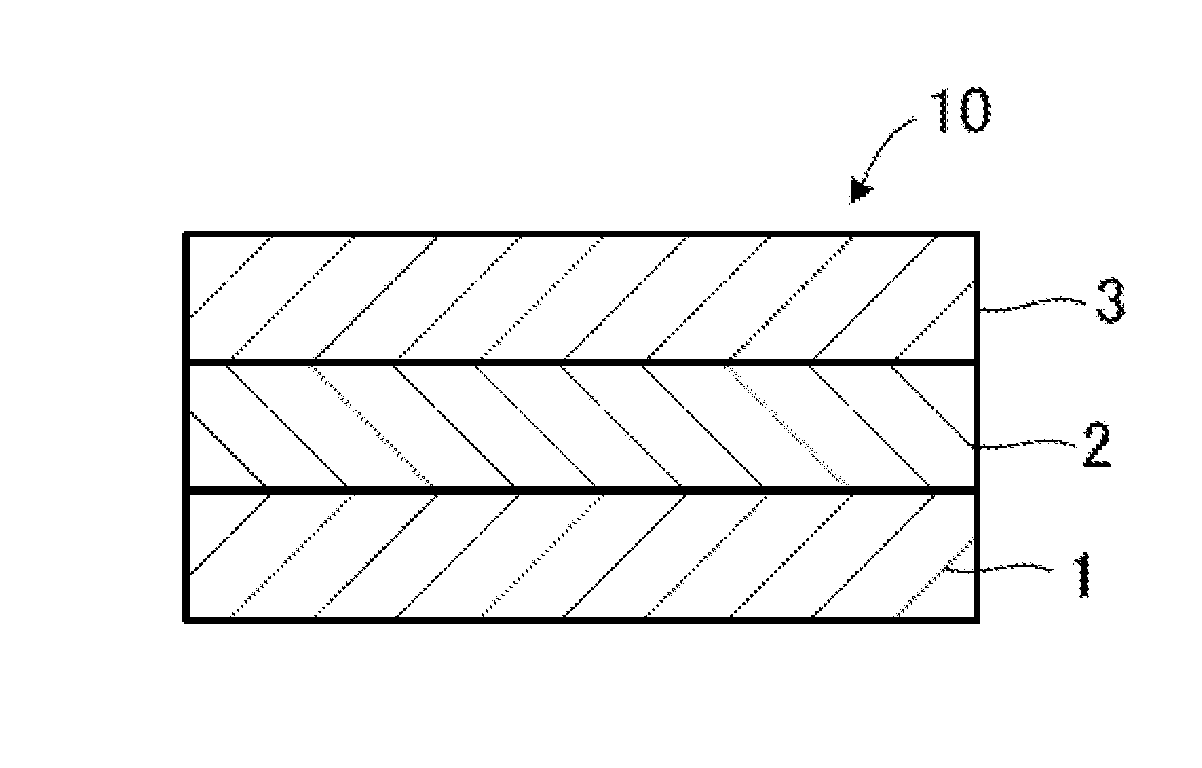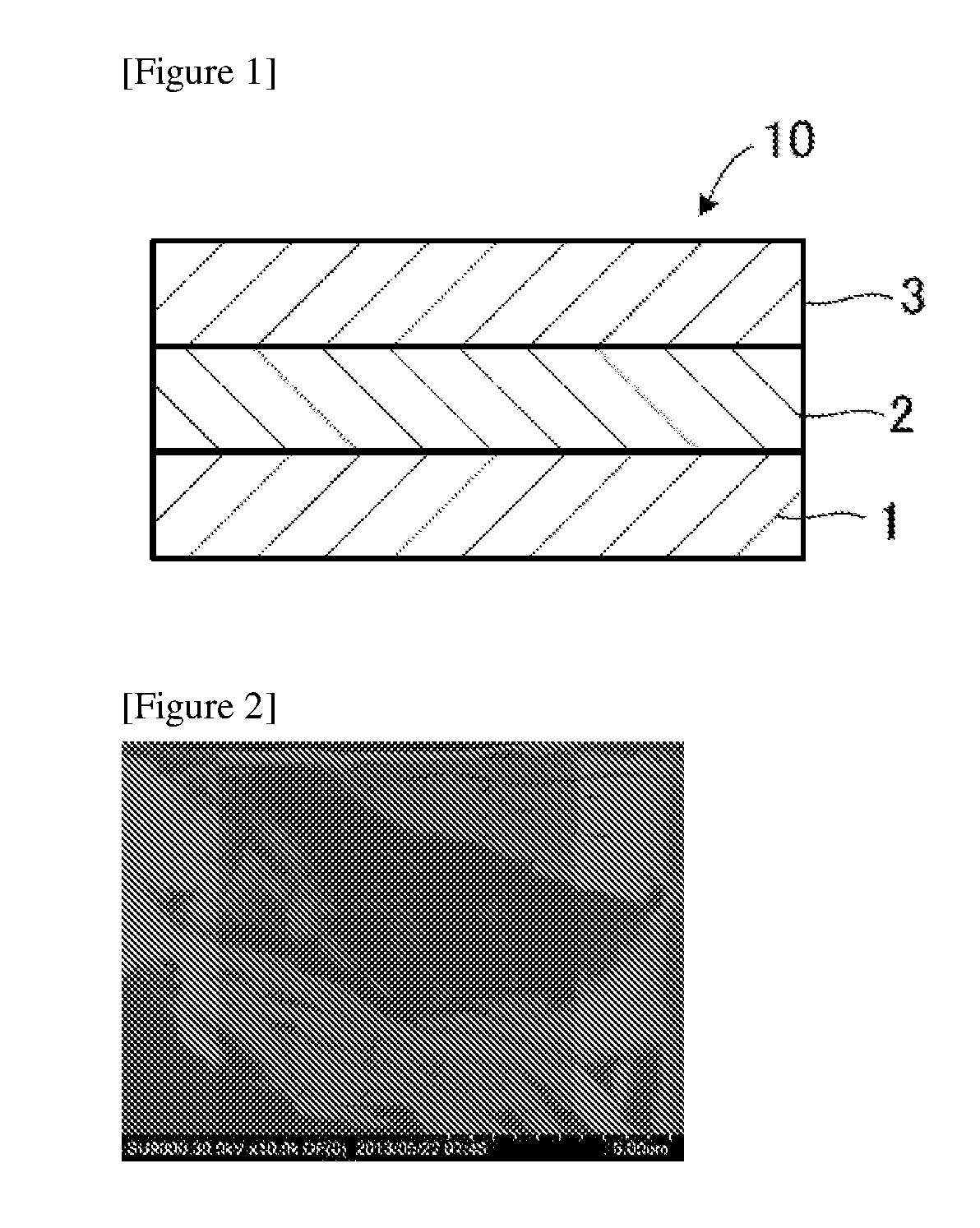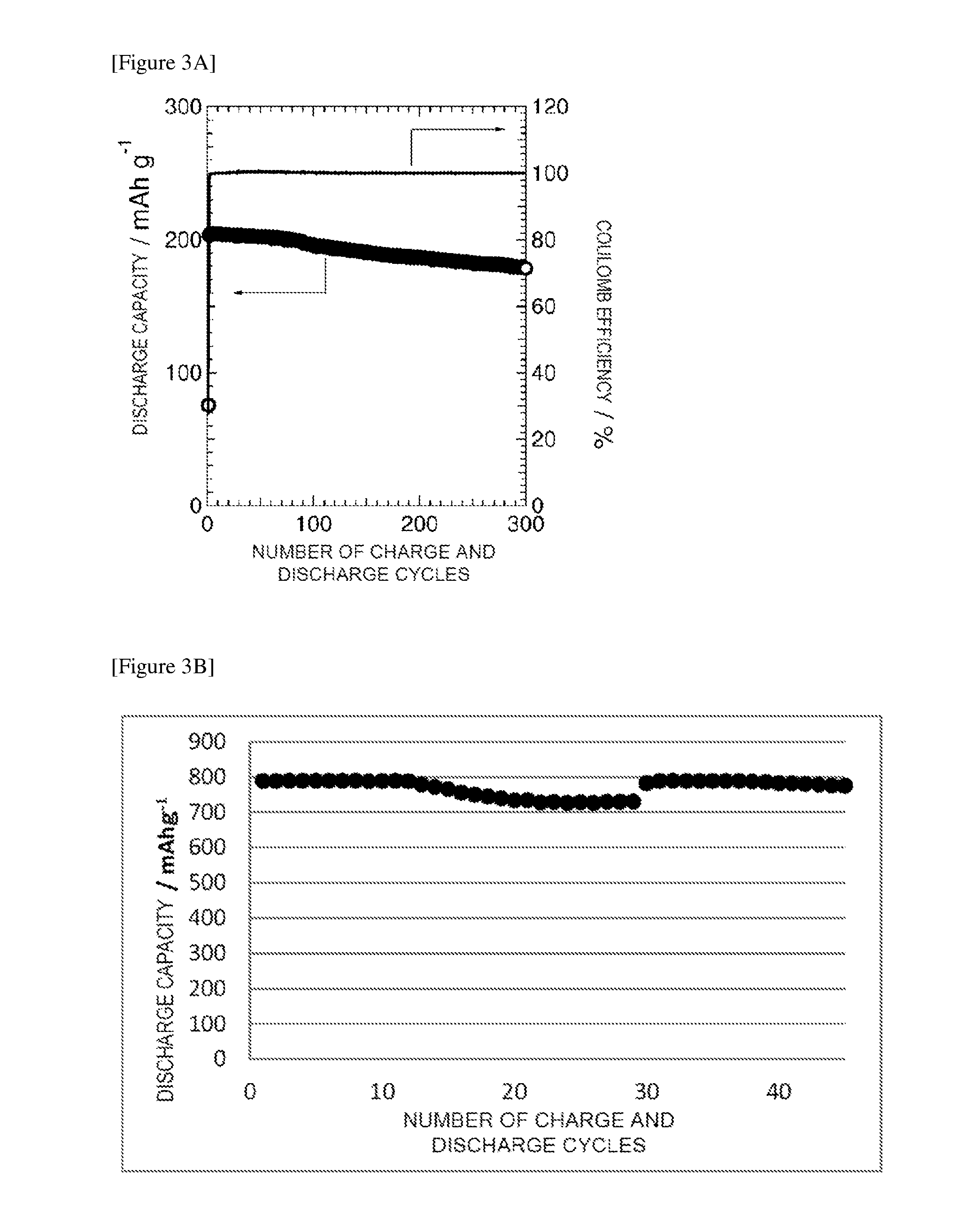Solid-state battery and method for manufacturing electrode active material
- Summary
- Abstract
- Description
- Claims
- Application Information
AI Technical Summary
Benefits of technology
Problems solved by technology
Method used
Image
Examples
example a
[0196]Hereinafter, the first aspect of the present invention will be described in detail by way of examples, but the contents of the present invention are not limited by these examples.
example a1
Preparation of Complex Hydride Solid Electrolyte
[0197]Within a glove box under an argon atmosphere, LiBH4 (with a purity of 90%, manufactured by Sigma-Aldrich Co. LLC.) was weighed out, and milled in an agate mortar, to obtain a complex hydride solid electrolyte (LiBH4).
(Preparation of Positive-Electrode Layer Powder)
[0198]Powders were weighed out within a glove box in a weight ratio of positive-electrode active material TiS2 (with a purity of 99.9%, manufactured by Sigma-Aldrich Co. LLC.):complex hydride solid electrolyte (LiBH4)=2:3, and mixed in a mortar, to give a positive-electrode layer powder.
(Production of Solid-State Battery)
[0199]The powder of the complex hydride solid electrolyte prepared above was put into an 8-mm diameter powder tableting machine and was press-formed at a pressure of 143 MPa into a disk shape (formation of complex hydride solid-electrolyte layer). Without taking out the formed product, the positive-electrode layer powder prepared above was put into the ...
example a2
[0202]Powders of a complex hydride solid electrolyte and a positive-electrode layer were prepared in the same manner as in Example A1.
(Production of Solid-State Battery)
[0203]The powder of the complex hydride solid electrolyte was put into an 8-mm diameter powder tableting machine and was press-formed at a pressure of 143 MPa into a disk shape. Without taking out the formed product, the positive-electrode layer powder was put therein and was integrally formed at a pressure of 285 MPa. Thus, a disk-shaped pellet in which the positive-electrode layer (75 μm) and the complex hydride solid electrolyte layer (300 μm) were laminated together was obtained. To this pellet, an indium foil with a thickness of 250 μm and a diameter of 8 mm was attached, and a metal lithium foil with a thickness of 200 μm and a diameter of 8 mm was further attached thereon, to form a negative-electrode layer for forming Li—In alloy, and the resultant was put into a battery test cell made of SUS304 to form a sol...
PUM
 Login to View More
Login to View More Abstract
Description
Claims
Application Information
 Login to View More
Login to View More - R&D
- Intellectual Property
- Life Sciences
- Materials
- Tech Scout
- Unparalleled Data Quality
- Higher Quality Content
- 60% Fewer Hallucinations
Browse by: Latest US Patents, China's latest patents, Technical Efficacy Thesaurus, Application Domain, Technology Topic, Popular Technical Reports.
© 2025 PatSnap. All rights reserved.Legal|Privacy policy|Modern Slavery Act Transparency Statement|Sitemap|About US| Contact US: help@patsnap.com



